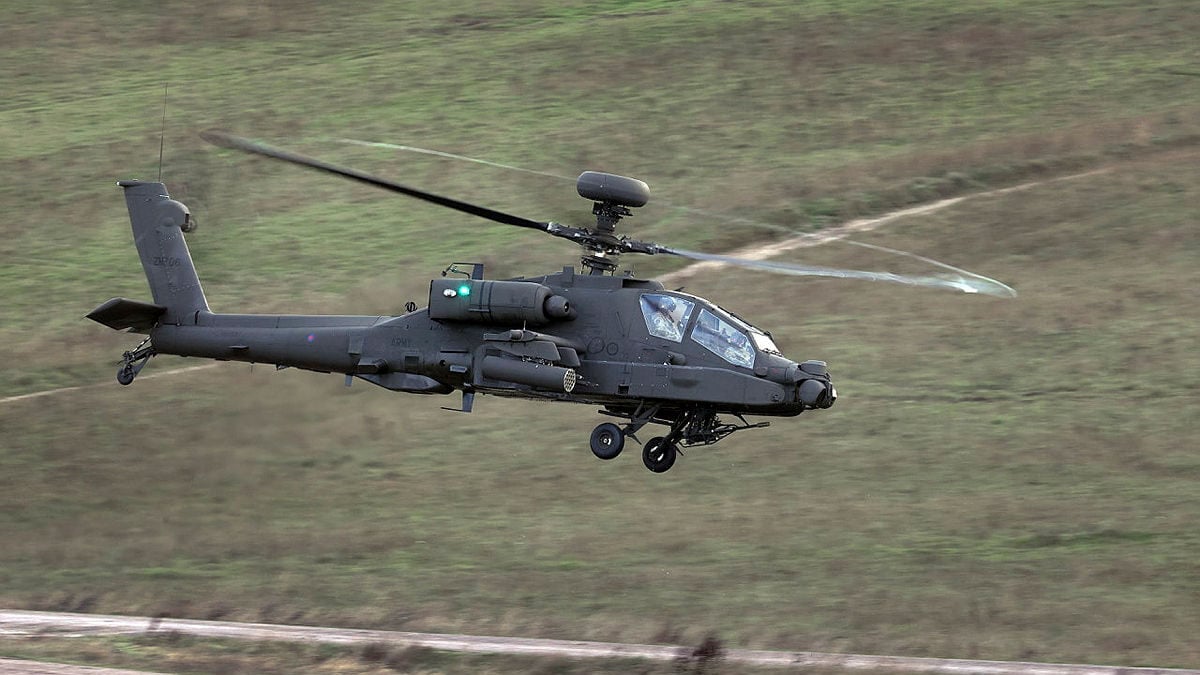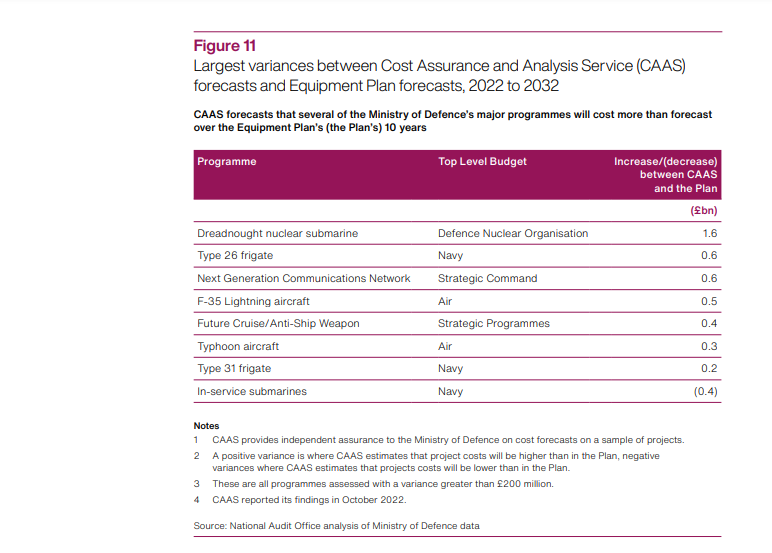
A British Army AH-64E Apache attack helicopter takes flight (UK MoD)
BELFAST — Britain’s National Audit Office (NAO) said that the UK Ministry of Defense (MoD) cannot afford to fund “all the capabilities” listed in the 2021 Integrated Review of Security, Defence, Development and Foreign Policy.
The Integrated Review, as it is more commonly referred to, was trumpeted by former Prime Minister Boris Johnson as the largest review of UK defense capabilities since the Cold War, but the verdict from the NAO delivers a hard-hitting critique of decision makers failing to properly manage and deliver major military procurements.
The financial watchdog’s assessment, written in the “Equipment Plan 2022 to 2032” report published last week, noted that “projects” included in the MoD’s $297 billion equipment and support budget “may” have to be replaced, reduced in size or take late deliveries if it is to invest in new technologies “within existing budget limits.”
“This is a dysfunctional planning system which looks to be world class in one respect, taking barrel loads of money and burning them,” said Francis Tusa, a UK defense analyst. “On every occasion the NAO has looked at the equipment plan it has said it’s not affordable and yet year after year we read the same thing.”
The financial foundations of the long-term equipment plan are also brought into question, as they fail to include “growing external cost pressures” like increased inflation and the war in Ukraine, according to the NAO. The annual auditor’s report has been designed to examine long-term MoD financial plans by looking at the 1,800 procurements being managed, alongside infrastructure and operational costs.
“While the Plan continues to serve a useful purpose in reporting to Parliament on planned expenditure, the volatile external environment means this year’s Plan is already out of date,” said the NAO.
The report arrives at a time when UK procurement has been jolted by a variety of program cancellations including the short-lived Project Mosquito, the low-cost, uncrewed aerial vehicle which failed to deliver a prototype and a Warrior infantry fighting vehicle upgrade, which ended after going $278 million over budget. The Ajax armoured vehicle program has also experienced a series of delays and continues to struggle with safety problems linked to excessive vibration. The UK government even had to admit recently that it has not set a “realistic timescale” for entry into service for the vehicle.
The NAO also fundamentally disputes the MoD’s confidence in being able to handle “affordability pressures” linked to the 10-year funding plan. On that front, the watchdog points to a need to secure additional “efficiency savings” of $2.3 billion without the MoD currently having a plan to achieve such a target.
“The Department has not assessed whether the Plan’s efficiency savings, which are based largely on renegotiating commercial contracts, remain realistic in the current economic climate,” added the NAO.
Based on a “sample of projects” assessed in the equipment plan, the MoD could also be exposed to a higher cost of $6.4 billion to fund them, though the NAO does not disclose the sampled projects specifically.

Forecast variances of programs like the UK’s F-35 fighter jet and Type 26 frigate programs indicate that both are set to cost more than forecast by the MoD, against an external assessment. (Photo: National Audit Office)
Contractor capacity and supporting skills are mentioned by the office as the “increasing risks” associated with acquisitions being delivered to budget and schedule.
The report also warns of the dangers in committing to new acquisitions, which appear destined for failure.
“Given the pressures on delivering the existing Plan within budget, the cost of introducing new equipment projects is likely to exceed the level of contingency funding,” the Office stated.
As Breaking Defense previously reported, major programs to see funding dropped by the MoD in the latest equipment plan and that were laid out in the Integrated Review, include the Type 32 Frigate and Multirole Support Ships (MRSS) programs. Both Royal Navy procurements were deemed to be unaffordable, for the moment. Funding has been postponed indefinitely, but the programs have not been cancelled outright.
“Both the Multi Role Support Ships and Type 32 remain a key part of the future fleet and we are working to ensure both projects are affordable and deliver the ships the Navy and Marines need,” stated a Royal Navy spokesperson in a Dec. 1 statement.
Tusa said, however, that the Royal Air Force’s E-7 Wedgetail Airborne Early Warning and Control (AEW&C) aircraft program stands out as “the most recent example of how the [equipment planning] system fails.”
Boeing and the MoD originally struck a $1.98 billion deal in 2019 for five Wedgetail aircraft in 2019 but that was cut to three upon publication of the Integrated Review.
“The RAF originally said the program could be done for £1.55 billion but it turned out very quickly that the real cost was going to be between £2.6 to £2.8 billion ($3.4 billion),” said Tusa, adding that the discrepancy was based on what he called a gross underestimate of cost by the MoD. “Things like training costs and infrastructure were also stripped out of program costs to make it seem cheaper. This is common behavior but it is exactly what the NAO is trying to keep an eye on.”
Asked specifically by lawmakers this week to disclose the current cost of the E-7 acquisition, Anna Keeling, managing director of Boeing UK, refused to do so on the basis that a full business case has still to be approved by the MoD. The document typically covers cost and schedule details per procurement.
Anduril debuts Pulsar AI-powered electronic warfare system
Company executives claimed the Pulsar system can use AI tools to quickly identify new threats and devise defenses against them, compressing the timeline for responding to rapidly-evolving electronic warfare.


























